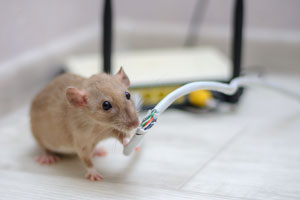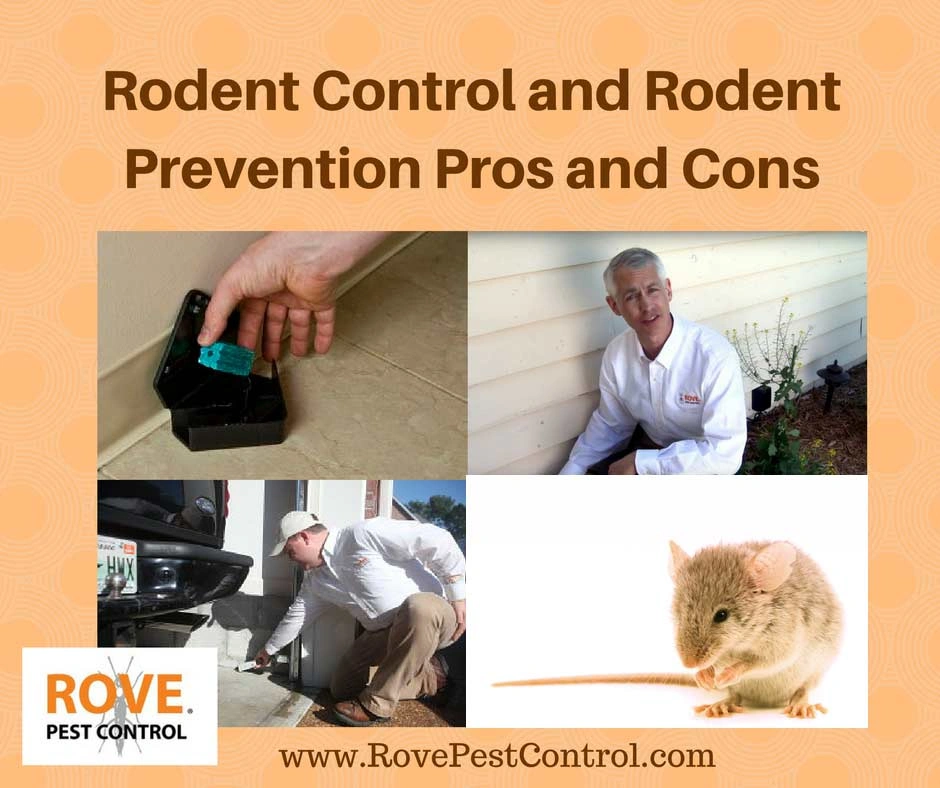Rodent Smoke Test is shared in this handy guide for homeowners
Wiki Article
All Concerning the Rodent Smoke Examination: A Proven Method for Identifying Rat Infestations
The Rodent Smoke Examination acts as a valuable analysis device for spotting rodent infestations in buildings. By making use of non-toxic smoke, this technique reveals airflow patterns that can suggest prospective entry factors. Recognizing just how the test runs and the benefits it provides can significantly assist residential or commercial property owners. The intricacies of preparing for the examination and translating its outcomes are crucial for reliable execution. What vital steps should one take into consideration prior to conducting this examination?What Is a Rodent Smoke Examination?

The examination is especially effective in structures where rodent invasions are presumed, as it discloses concealed susceptabilities that might otherwise go unnoticed. The smoke, which disperses easily, will leave with any kind of openings, enabling experts to pinpoint locations that require securing or repair work.
Inevitably, the rodent smoke examination functions as a proactive action in insect management, helping in the prevention of future invasions by ensuring that buildings are effectively secured versus undesirable wildlife. This strategy underscores the relevance of maintaining a protected atmosphere to hinder rodents successfully.
Exactly How the Rat Smoke Examination Works
The Rodent Smoke Examination includes specific preparation actions to assure precise outcomes. Recognizing exactly how to analyze smoke patterns is vital for recognizing potential rodent entry points. This process supplies useful understandings into rodent habits and environment choices.
Examination Preparation Steps
Effective prep work is important for the successful execution of the Rat Smoke Test. This process starts with a comprehensive examination of the properties to recognize prospective entry points for rats. Validating that all windows, doors, and vents are securely shut will protect against any unexpected getaway of smoke during the test. Next off, the area must be cleared of any type of products that might obstruct the flow of smoke or disrupt the results. The smoke-generating device should be placed strategically to maximize coverage of the examination location. It is necessary to notify residents of the approaching examination to ensure their safety and convenience. Proper prep work sets the stage for exact lead to identifying rodent invasions.Analyzing Smoke Patterns
When carrying out the Rodent Smoke Examination, analyzing the patterns of smoke is important for identifying concealed rodent pathways. As the smoke is presented into possible access points, it takes a trip with any kind of openings or spaces in the structure. Onlookers ought to note where the smoke distributes promptly, suggesting a direct course preferred by rats. On the other hand, areas where smoke remains recommend that the pathway might be blocked or less frequently utilized. In addition, the instructions of smoke motion can reveal concealed nests or burrows. A detailed evaluation of these patterns allows pest control experts to determine important locations for treatment, guaranteeing a more efficient eradication method. This technique highlights the value of in-depth smoke evaluation in finding rodent task.Benefits of Using the Rat Smoke Test
The Rodent Smoke Examination offers significant advantages in insect monitoring. Its quick discovery approach enables the fast recognition of rodent invasions, facilitating prompt treatments. In addition, the non-invasive technique lessens disruption to the atmosphere, making it an effective option for building owners.Quick Discovery Technique

Non-Invasive Technique
Lots of insect control approaches can be invasive and turbulent, the Rodent Smoke Examination stands out for its non-invasive nature. This technique uses harmless smoke to determine rodent paths without the demand for comprehensive excavation or structural alterations. By presenting smoke right into possible entry factors, property proprietors can conveniently observe how it travels and where rats may be penetrating. This technique minimizes disturbance to the atmosphere and existing structures, permitting for a swift evaluation of the infestation. Furthermore, the Rodent Smoke Examination is efficient in identifying issue locations, enabling targeted treatments. Consequently, it not only conserves sources but also lowers the stress usually connected with even more traditional insect control techniques, making it an eye-catching alternative for several.Identifying Entrance Details and Nesting Areas
Identifying entry factors and nesting areas is crucial in successfully handling rodent invasions. Rodents are skilled at manipulating small openings, typically as little as a quarter of an inch. Usual entry factors consist of spaces around pipelines, home windows, and vents, in addition to splits in walls and foundations. Examining these areas thoroughly can disclose possible gain access to courses for rats.Nesting areas can typically be located in hidden spaces such as attics, basements, or wall surface spaces - Rodent Smoke Test. Indications of nesting include droppings, chomp marks, and shredded materials. Utilizing an organized method, home owners ought to perform normal assessments, concentrating on both outside and indoor areas. Keeping an eye on for signs of task, such as footprints or fur, can likewise help in identifying these important areas. By pinpointing entrance factors and nesting areas, efficient control measures can be carried out, preventing more rodent incursions and securing the building
Getting ready for a Rat Smoke Examination
Preparing for a rodent smoke examination calls for mindful preparation and interest to information to guarantee efficient results. First, the area has to be completely checked to recognize prospective entrance factors and nesting sites, making certain that all possible areas are covered during the test. Next off, the setting needs to be free from any type of blockages or items that might hinder the smoke's dispersion. It is vital see this to secure any type of identified entrance factors temporarily, making use of products such as tape or plastic to avoid outside air from weakening the smoke. In addition, the smoke source should be very carefully chosen, ensuring it is ideal for indoor usage and safe for the residents. It is suggested to notify any structure owners regarding the test schedule to reduce direct exposure to smoke and ensure their safety. Complying with these steps will improve the efficiency of the rodent smoke examination and offer clearer understandings right into potential problems.Translating the Outcomes of the Examination
As soon as the rodent smoke examination has been performed, interpreting the outcomes comes to be essential for comprehending the extent of any kind of invasions. Rodent Smoke Test. informative post Observers ought to closely examine the locations where the smoke has run away, as this shows possible access factors for rats. If the smoke disperses rapidly with holes, splits, or voids, it symbolizes that these openings may be made use of by rats for accessThe presence of smoke in specific areas can suggest nesting sites or pathways regularly taken a trip by rodents. Odorous residues or dark spots left behind can even more verify active invasions.
It is essential to set apart in between substantial breaches and small leakages. A minimal number of smoke escape points could suggest isolated rodent activity, while prevalent dispersal recommends a more serious invasion. Recognizing these outcomes enables home owners to evaluate the seriousness of attending to the problem and aids overview subsequent activities for efficient rodent control.
Following Steps After Carrying Out the Test
After interpreting the outcomes of the rodent smoke examination, homeowner have to take crucial activity to attend to any kind of identified issues. If the test exposes pathways used by rats, instant steps need to be employed to secure these access points. This might consist of repairing holes, setting up door moves, and reinforcing vents.
Next off, homeowner need to consider consulting bug control professionals to examine the extent of the invasion and develop a tailored elimination strategy. Normal surveillance and maintenance ought to comply with to avoid future incidents.
Additionally, it is necessary to remove prospective food resources by protecting waste and storing food properly. Homeowner might additionally intend to carry out further evaluations to recognize nesting sites or other indications of rodent activity. By implementing these steps, they can successfully mitigate the dangers connected with rodent infestations, making sure a healthier living environment.
Often Asked Inquiries
Just how Frequently Should I Conduct a Rodent Smoke Examination?
The recommended frequency for performing a rodent smoke test differs, but typically, it needs to be done at least two times a year or after any kind of substantial structural modifications, ensuring recurring surveillance for prospective rodent problems.Is the Smoke Used Harmful to Human Beings or pets?
The smoke used in the rodent examination is typically taken into consideration non-toxic to people and pet dogs when applied appropriately. Nevertheless, people ought to identify correct air flow and seek advice from item guidelines to reduce any prospective risks.Can I Conduct a Rat Smoke Examination Myself?
Carrying browse around here out a rodent smoke examination independently is feasible, yet it requires certain equipment and expertise. Rodent Smoke Test. Correct safety precautions need to be complied with to guarantee efficiency and reduce risks to health and residential property throughout the procedureWhat Should I Do if I See Smoke Escaping?
If smoke gets away during the examination, the person should promptly stop the treatment, determine the source of the leakage, and examine potential access factors for rodents. Consulting a professional pest control solution is encouraged for resolution.Exist Any Different Methods to the Smoke Examination?
Yes, alternate techniques to the smoke test consist of utilizing infrared video cameras to spot warm trademarks, aesthetic examinations for droppings, and using lure stations to monitor rodent activity. Each method uses special benefits for recognizing infestations.The Rat Smoke Test serves as an important analysis tool for discovering rodent infestations in buildings. When carrying out the Rodent Smoke Test, analyzing the patterns of smoke is vital for identifying covert rodent pathways. A rapid and reliable detection approach, the Rodent Smoke Examination supplies significant benefits for recognizing prospective entry factors in frameworks. As soon as the rodent smoke test has actually been carried out, analyzing the results becomes crucial for recognizing the extent of any kind of infestations. If smoke leaves during the test, the individual ought to quickly cease the procedure, identify the source of the leakage, and analyze prospective entrance points for rats.
Report this wiki page